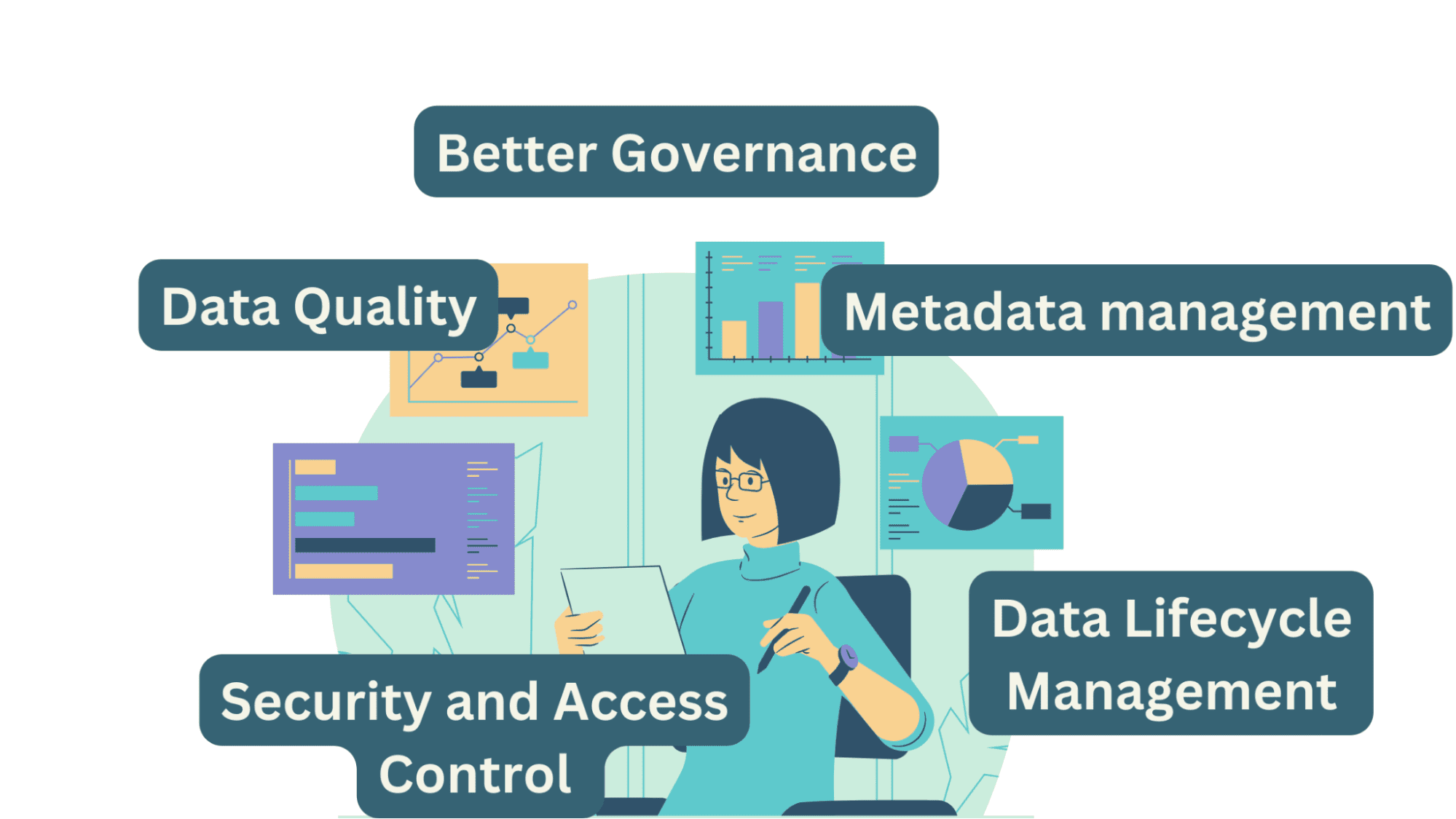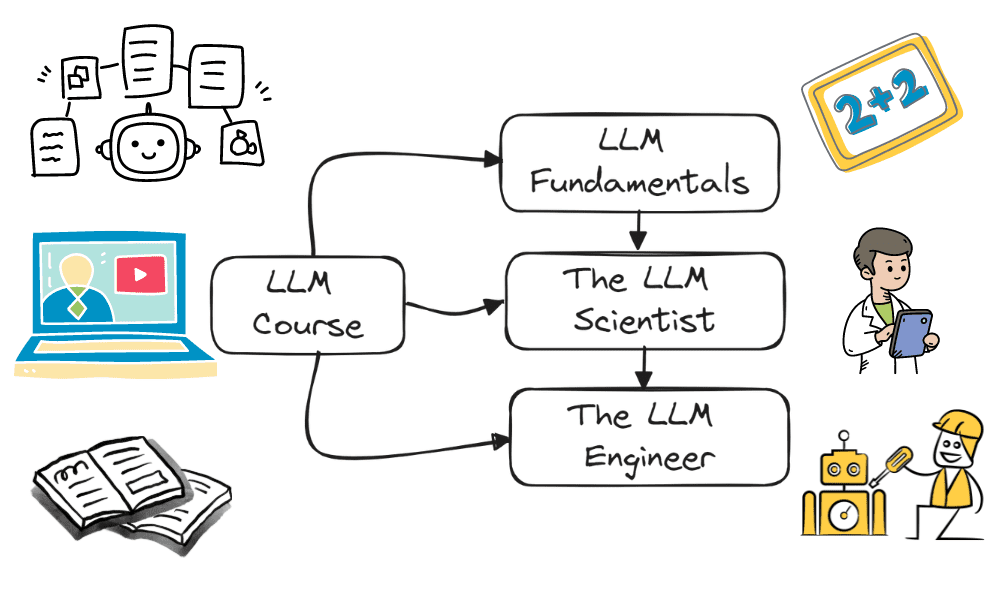
Image by Author
If you’re a data professional, you’re probably familiar with the data lake architecture. A data lake can store large volumes of raw and unstructured data. So it offers both flexibility and scalability. That said, in the absence of data governance, a data lake can quickly turn into a “data swamp” making it super challenging to derive any value from the massive volume of data.
In this article, we’ll review the features and advantages of data lakes, go over the challenges that lead them to become data swamps, and, more importantly, strategies to mitigate these challenges. Let’s begin!
A data lake is a data repository that allows organizations to store large volumes of raw, unstructured, semi-structured, and structured data at scale. It serves as a flexible and cost-effective solution for managing diverse data types, enabling advanced analytics, machine learning, and other data-driven applications. Now we’ll go over some of the features and advantages of data lakes.
Features of Data Lakes
Let’s review some of the features of data lakes across types of data, data storage, ingestion, and processing:
- Types of Data: Data lakes can store large volumes of data in the raw unprocessed format.
- Batch and Real-time Ingestion: Data lakes support both batch and real-time data ingestion, enabling organizations to handle data from various sources, including streaming data.
- Storage Layer: The storage layer of data lakes is often built on distributed file systems or cloud-based object storage.
- Processing Frameworks: Data lakes leverage distributed processing frameworks such as Apache Spark, Flink, and Hadoop MapReduce for parallel and scalable data processing.
- Integration with Analytics Tools: Data lakes integrate with a variety of analytics and business intelligence tools, enabling users to analyze and visualize data using familiar interfaces.
Advantages of Data Lakes
Now let’s go over some advantages of data lakes as a storage abstraction:
- Flexibility: Data lakes can store a wide range of data types, including text, images, videos, log files, and structured data. This flexibility allows organizations to ingest and process diverse datasets without the need for predefined schemas. Unlike data warehouses, data lakes store raw, unaggregated data in their native format.
- Scalability: Data lakes are designed to scale horizontally, allowing organizations to store and process massive volumes of data.
- Cost-Effective Storage: By leveraging cloud-based object storage or distributed file systems, data lakes provide a cost-effective solution for storing large amounts of data. Cloud-based data lakes, in particular, allow organizations to pay for the storage and computing resources they actually use.
To see how data lakes compare to data warehouses and data marts, read Data Warehouses vs. Data Lakes vs. Data Marts: Need Help Deciding?
A data lake, when managed properly, serves as a centralized repository for storing vast amounts of raw and unstructured data from various sources. However, in the absence of proper governance, a data lake can turn into what is colloquially referred to as a “data swamp.”
Governance refers to the set of policies, procedures, and controls that guide the use, access, and management of data within an organization. Here’s how the absence of governance can contribute to the transformation of a data lake into a swamp:
- Data Quality Degradation: Without proper governance, there are no defined standards for data quality, leading to inconsistencies, inaccuracies, and incomplete datasets. The lack of quality control contributes to a decline in the overall reliability of the data.
- Uncontrolled Data Proliferation: Absence of governance policies results in unregulated data ingestion, leading to a massive influx of data without proper categorization or organization.
- Inconsistent Data Usage Policies: Without governance, there are no clear guidelines on how data should be accessed, used, and shared. The absence of standardized practices can also hinder collaboration and interoperability among different teams.
- Security and Compliance Risks: Without proper access controls, unauthorized users may have access to sensitive information. This can lead to data breaches and compliance issues.
- Limited Metadata and Cataloging: Metadata typically provides information about the source, quality, and lineage of the data. Lack of metadata makes it super challenging to trace the origin and transformations applied to the data. In a data swamp scenario, there is often a lack of a centralized catalog or index, making it difficult for users to discover and understand the available data assets.
- Lack of Lifecycle Management: Without defined policies for data retention and archiving, the data lake may become cluttered with outdated or irrelevant data, making it harder to find and use valuable information.
Lack of governance, therefore, can turn a data lake into a swamp, diminishing its utility and creating challenges for users and organizations.
To prevent a data lake from becoming a swamp, organizations should focus on the following essential strategies:
- Robust Governance Policies
- Effective Metadata Management
- Data Quality Monitoring
- Access Controls and Security Measures
- Data Lifecycle Management and Automation
Let’s delve deeper into each of the above strategies to understand their importance and how they contribute to maintaining an efficient and useful data lake.

Image by Author
Robust Governance Policies
Establishing clear governance policies is foundational for the effective management of a data lake:
- Defining data ownership ensures accountability and clarity regarding who is responsible for the quality and integrity of specific datasets.
- Access controls set the boundaries for who can access, modify, or delete data, helping to prevent unauthorized usage.
- Usage guidelines provide a framework for how data should be utilized, preventing misuse and ensuring compliance with regulatory requirements.
By assigning roles and responsibilities to data stewards, administrators, and users, organizations create a structured and accountable environment for data management.
Effective Metadata Management
A comprehensive metadata management system captures essential information about data assets. Knowing the source of data helps establish its credibility and origin, while details about quality and lineage provide insights into its reliability and processing history.
Understanding transformations applied to the data is also important for data scientists and analysts to interpret and use the data effectively. A well-maintained metadata catalog ensures that users can discover, understand, and use the data within the data lake.
Data Quality Monitoring
Regular data quality checks are essential for maintaining the accuracy and reliability of data within the lake.
- Conducting these checks involves validating data formats to ensure consistency.
- Checking for completeness ensures that datasets are not missing critical information.
- Identifying anomalies helps catch errors or inconsistencies in the data, preventing the propagation of inaccurate insights.
Proactive data quality monitoring ensures that the data lake remains a reliable source for decision-making and analysis.
Access Controls and Security Measures
Enforcing stringent access controls and encryption safeguards the data lake from unauthorized access and potential security threats. Access controls limit who can view, modify, or delete data, ensuring that only authorized personnel have the necessary permissions.
Regularly auditing access logs helps identify and address any suspicious activities, providing a proactive approach to security. Implementing encryption ensures that sensitive data is protected, both in transit and at rest.
These security measures collectively contribute to maintaining the confidentiality and integrity of data in the data lake.
Data Lifecycle Management and Automation
Defining and enforcing data retention policies is necessary for preventing the accumulation of outdated or irrelevant data. Automated data cataloging tools help manage data throughout its lifecycle.
This includes archiving data that is still valuable but not frequently accessed, purging obsolete data, and efficiently organizing data for easy discovery. Automation reduces the manual effort required for managing the vast amount of data in the lake, ensuring that it remains organized, relevant, and easily accessible to users.
In summary, these strategies together help create a well-governed and well-managed data lake—preventing the data lake from turning into a chaotic and unusable data swamp. They contribute to maintaining data integrity, ensuring security, facilitating efficient data discovery, and preserving the overall effectiveness of the data lake environment.
In conclusion, data lakes are a powerful solution for managing and extracting value from large and diverse datasets. Their flexibility, scalability, and support for advanced analytics make them valuable for data-driven organizations.
To avoid turning a data lake into a data swamp, however, organizations must invest in robust data governance, implement effective metadata management, enforce security measures, conduct regular data quality assessments, and establish clear policies for data lifecycle management.
Bala Priya C is a developer and technical writer from India. She likes working at the intersection of math, programming, data science, and content creation. Her areas of interest and expertise include DevOps, data science, and natural language processing. She enjoys reading, writing, coding, and coffee! Currently, she’s working on learning and sharing her knowledge with the developer community by authoring tutorials, how-to guides, opinion pieces, and more.



